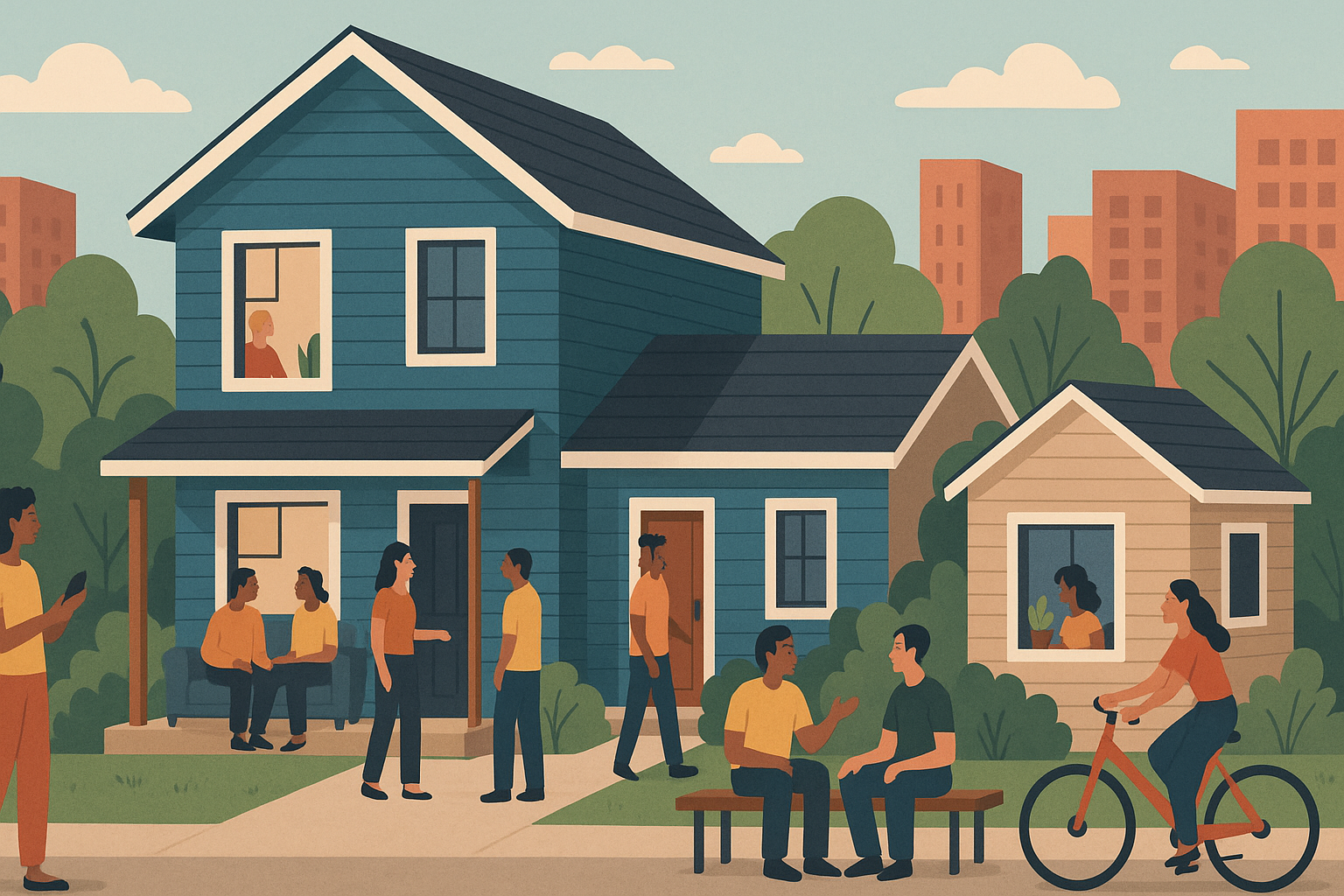
Co-living ADU Developments: Redefining Canadian Neighbourhoods through Community Living and Shared Spaces
Estimated reading time: 7 minutes
Key Takeaways
- Innovative Housing Model: Co-living ADU developments combine shared communal spaces with accessory dwelling units to maximize land use.
- Community and Affordability: This model targets housing affordability challenges while fostering stronger community ties.
- Financial and Social Benefits: Homeowners enjoy supplemental income and increased property value while renters benefit from reduced costs and social connectivity.
- Responsive Urban Development: These developments are emerging as a strategic response to urban density and limited buildable areas in Canada.
Table of contents
What Are Co-living ADU Developments?
ADU Development Defined
Accessory Dwelling Units (ADUs) are secondary, fully self-contained homes built on the same lot as a main house. Common types include:
- Basement apartments: Finished spaces with kitchenettes and separate entrances.
- Garden suites: Small backyard cottages or cabins.
- Laneway houses: Compact residences built along back alleys.
This innovative approach supports creative use of land and increases housing options on the same property, as seen on Investopedia and Novacon.
The Co-living Model
In a co-living setup, residents have private bedrooms while sharing central amenities such as kitchens, living rooms, bathrooms, and outdoor areas. This balance promotes community interaction and a sense of belonging, as detailed by Coliving.com and ArcoMurray.
How It Differs from Traditional Rentals
- Traditional rentals: Emphasize separation with minimal resident interaction.
- Co-living ADUs: Focus on shared responsibilities and community connection.
The Emergence of Co-living ADU Developments in Canadian Neighbourhoods
Trends in Canadian Neighbourhoods
Across Canada, cities and towns are embracing ADU development to counter housing shortages. Regions like Ontario and Montreal suburbs are pioneering policies that facilitate ADU permits. For example, in Ontario, legislative frameworks such as the Ontario Planning Act support flexible ADU policies (Novacon, ADU Permitting in Ontario Guide).
Why Now? The Drive Behind Growth
Several factors propel this growth:
- Rising urban density: Cities must maximize limited space due to scarce buildable land.
- Affordable housing demand: Addressing soaring rental costs and limited options (Affordable Housing Solutions).
- Changing demographics: Including more single-person households, multigenerational families, and seniors looking for community support (Multigenerational Living with ADUs).
Financial Impact and Advantages of Co-living ADU Developments
Homeowner Benefits
- Supplementary rental income: Renting out ADUs can help manage mortgage costs (How a Secondary Unit Can Boost Property Value and Rental Income).
- Enhanced property value: Well-designed ADUs increase resale value (Accessory Dwelling Units Guide).
- Cost-sharing: Expenses like utilities and taxes are split among residents (Investopedia).
Renter Advantages
- Affordability: Shared costs result in lower rent and utilities.
- Access to better amenities: Larger kitchens, backyards, or on-site laundry become attainable.
- Shorter commutes: Many co-living ADUs are located in well-serviced urban areas (Novacon).
Neighbourhood-Wide Impact
- Greater housing supply can stabilize rent and home prices.
- Diverse housing options support inclusive communities.
- Enhanced homeownership prospects for many, thanks to supplementary income.
Future Outlook for Co-living ADU Developments in Canada
Predicted Growth and Expansion
As urban pressures grow, several factors signal wider adoption of co-living ADU developments:
- Relaxed zoning laws: More flexible codes may allow additional ADU conversions (Canadian ADU Regulations Guide).
- Evolving building codes: Updated safety regulations may better reflect shared living needs (Tiny Home Fire Safety Canada).
- Mainstream adoption: Co-living could soon become a common choice for renters, downsizers, and first-time home buyers.
Wider Societal Implications
- More inclusive cities: Diverse populations including students, immigrants, and seniors benefit from accessible housing.
- Stronger social fabric: Built-in support networks help reduce loneliness and improve quality of life.
- Environmental efficiency: Sharing resources leads to improved urban sustainability.
Conclusion
Co-living ADU developments offer a forward-thinking solution to Canada’s housing challenges. By combining the benefits of shared living with innovative property use, these developments:
- Enhance community connections: Encouraging daily interaction and mutual support.
- Offer financial resilience: Homeowners benefit from rental income, while renters gain access to affordable, well-appointed living spaces.
As municipal policies evolve, co-living ADU developments are set to redefine urban living, creating more vibrant and inclusive neighbourhoods. For more insights, explore resources like Investopedia, Novacon, XpertSource, Coliving.com, and ArcoMurray.
Frequently Asked Questions
Q1: What exactly is an ADU?
A: An Accessory Dwelling Unit (ADU) is a self-contained secondary housing unit built on the same lot as a primary residence. It can take various forms such as basement apartments, garden suites, or laneway houses.
Q2: How does co-living differ from traditional apartment rentals?
A: In a co-living setup, residents enjoy private spaces while sharing common areas like kitchens and lounges. This arrangement fosters community interaction and shared responsibilities, unlike typical apartment rentals where interactions are minimal.
Q3: What benefits do homeowners gain from developing an ADU?
A: Homeowners can supplement their income by renting out the ADU, enhance property value, and share maintenance costs with tenants, making it an attractive option in today’s housing market.

Leave a Reply